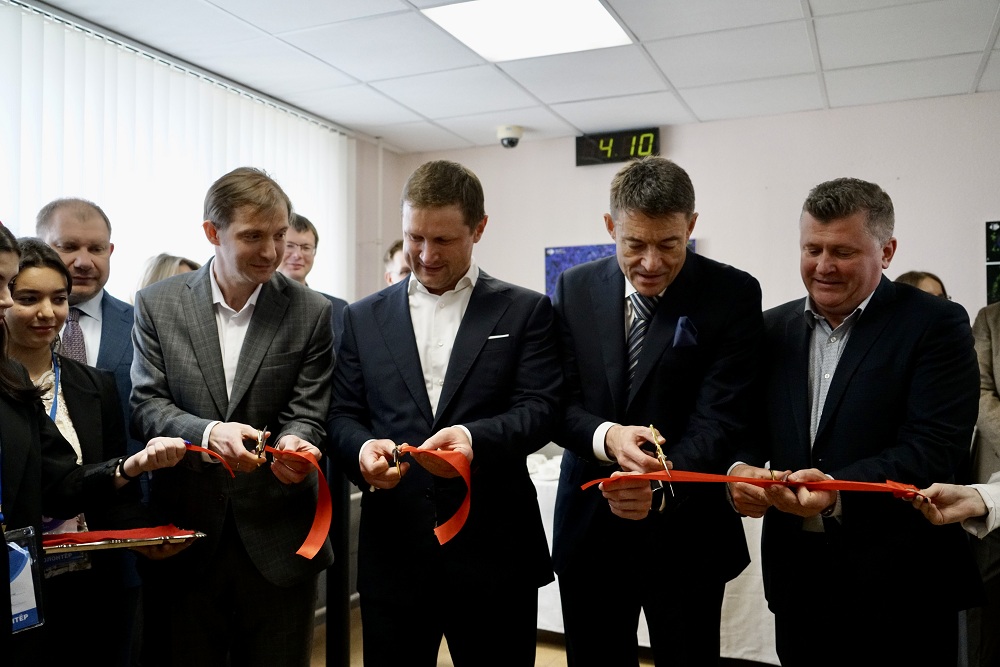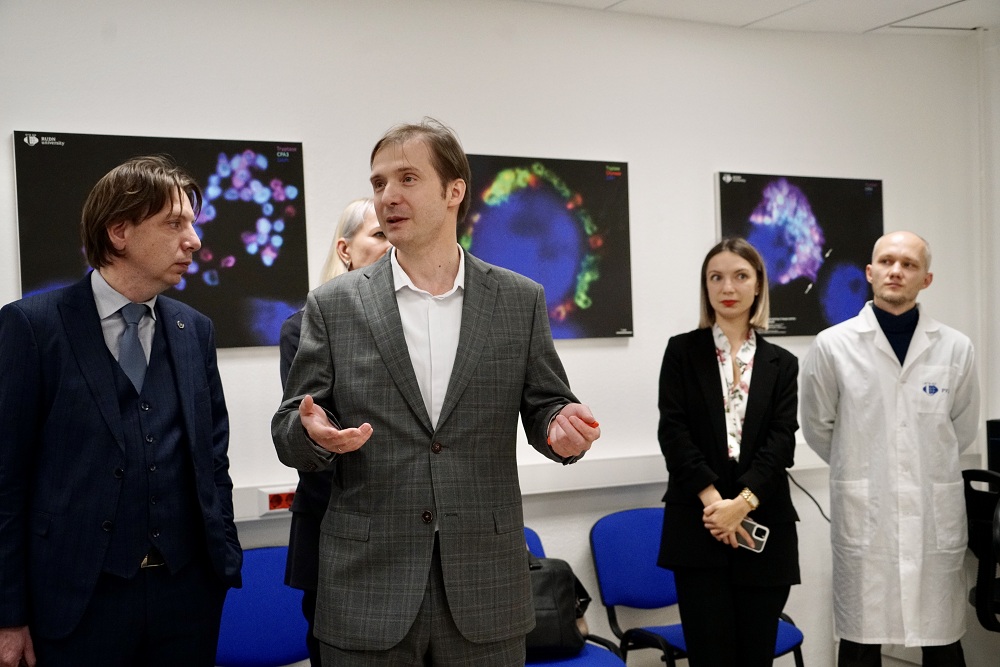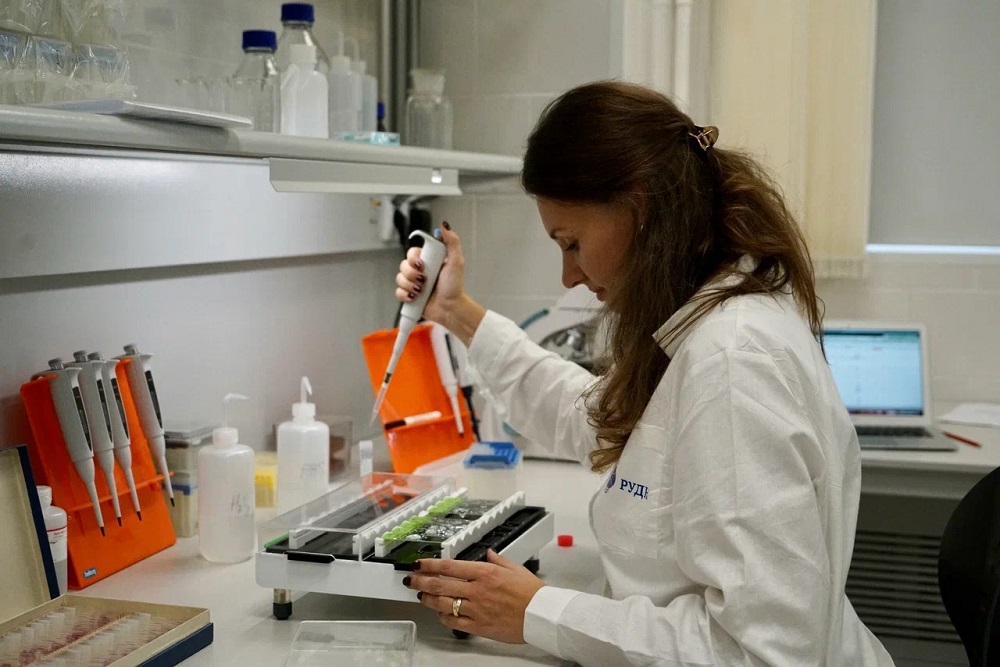Tissue architecture, cell organization, biomedical products: a scientific and educational resource center opens at RUDN University
The center’s scientists will conduct molecular and morphological studies using spatial phenotyping, multispectral imaging, ultra-high resolution imaging, bioinformatics analysis, and digital pathology. The center has equipment for in situ multiplex analysis at various levels of organization of living systems.
It is no coincidence that we decided to organize such a resource center at the Peoples’ Friendship University of Russia. RUDN University is a modern international research university and it should have comprehensive competences to conduct fundamental scientific research. We hope that the Center for Molecular Morphology will become one of the growth points for exploratory interdisciplinary projects
This direction can create conditions not only for the implementation of science-intensive projects, but also for clinical research, with the development of new tactics for personal treatment, original methods of treatment depending on the individual sensitivity of tumor cells to specific drugs, in fact, using a “superpersonalized” approach. I hope that the results of the work of the resource center will be useful for patients
We are trying to form a high-tech infrastructure of the Center because of important prospects for advanced and breakthrough research in translational medicine. A new understanding of the fundamental mechanisms of adaptive and pathological processes will significantly improve the effectiveness of diagnostic and therapeutic algorithms for personalized medicine
Dmitry Atyakshin, Doctor of Medical Sciences, Advisor to RUDN Rectorate on Biomedical Projects, has been appointed Director of the Scientific and Educational Resource Center “Innovative Technologies of Immunophenotyping, Digital Spatial Profiling and Ultrastructural Analysis”.
After the opening ceremony, a scientific round table “Spatial phenotyping and multispectral imaging in the translational aspects of personalized medicine” was held. It was dedicated to the search for methods of work in the resource center. The round table was attended by:
- L.Buravkova — Corresponding Member of the Russian Academy of Sciences, Deputy Director for Research of the State Research Center of the Russian Federation Institute of Biomedical Problems of the Russian Academy of Sciences.
- A.Kaprin — Chairman of RUDN Supervisory Board, Academician of the Russian Academy of Sciences, General Director of the National Medical Research Center for Radiology of the Ministry of Health of Russia, Chief Oncologist of the Ministry of Health of the Russian Federation.
- A.Kostin — First Vice-Rector, Vice-Rector for Research at RUDN University, Corresponding Member of the Russian Academy of Sciences.
- L.Mikhaleva — Corresponding Member of the Russian Academy of Sciences, Director of Avtsyn Research Institute of Human Morphology of Petrovsky National Research Center of Surgery.
- S.Morozov — Leading Researcher, Veltishchev Research Institute of Pediatrics and Pediatric Surgery of Pirogov Russian National Research Medical University of the Ministry of Health of Russia.
- D.Nikityuk — Academician of the Russian Academy of Sciences, Chairman of the Scientific Medical Society of Anatomists, Histologists and Embryologists of Russia, Director of the Federal Research Center for Nutrition, Biotechnology and Food Safety.
- A.Samoilov — Corresponding Member of the Russian Academy of Sciences, General Director of Burnazyan Federal Medical Biophysical Center of Federal Medical Biological Agency.
- T.Fatkhudinov — Deputy Director for Science of RUDN Medical Institute, Head of the Department of Histology, Cytology and Embryology.
The exhibition “One picture is worth a thousand words” is opened in the Center. More than 50 stands feature modern trends in molecular imaging of histological sections using histochemical and multiplex immunomorphological staining techniques.
Reference:
RUDN implements a program for the development of the “Translational Medicine” biomedical cluster. RUDN researchers are developing biomedical science on the Digital Medicine platform with breakthrough fundamental research for healthcare and biomedical technologies.
A RUDN agrotechnologist has identified wheat genotypes that are resistant to a dangerous fungal pathogen that infects plants even before the snow melts and reduces yields.
RUDN University engineers have calculated the parameters of a system that can prevent lunar power plants from overheating. These developments will be needed when planning for long-term lunar missions and colonizing the satellite.
Landfills are the third largest source of anthropogenic methane in the world. They account for ~11% of estimated global emissions. Methane is 80 times more powerful than carbon dioxide and is the second largest driver of man-made climate change. Scientists from around the world met at Zhejiang University's Hangzhou campus to determine the best available technologies for recovering energy and materials from non-recyclable residual waste.




